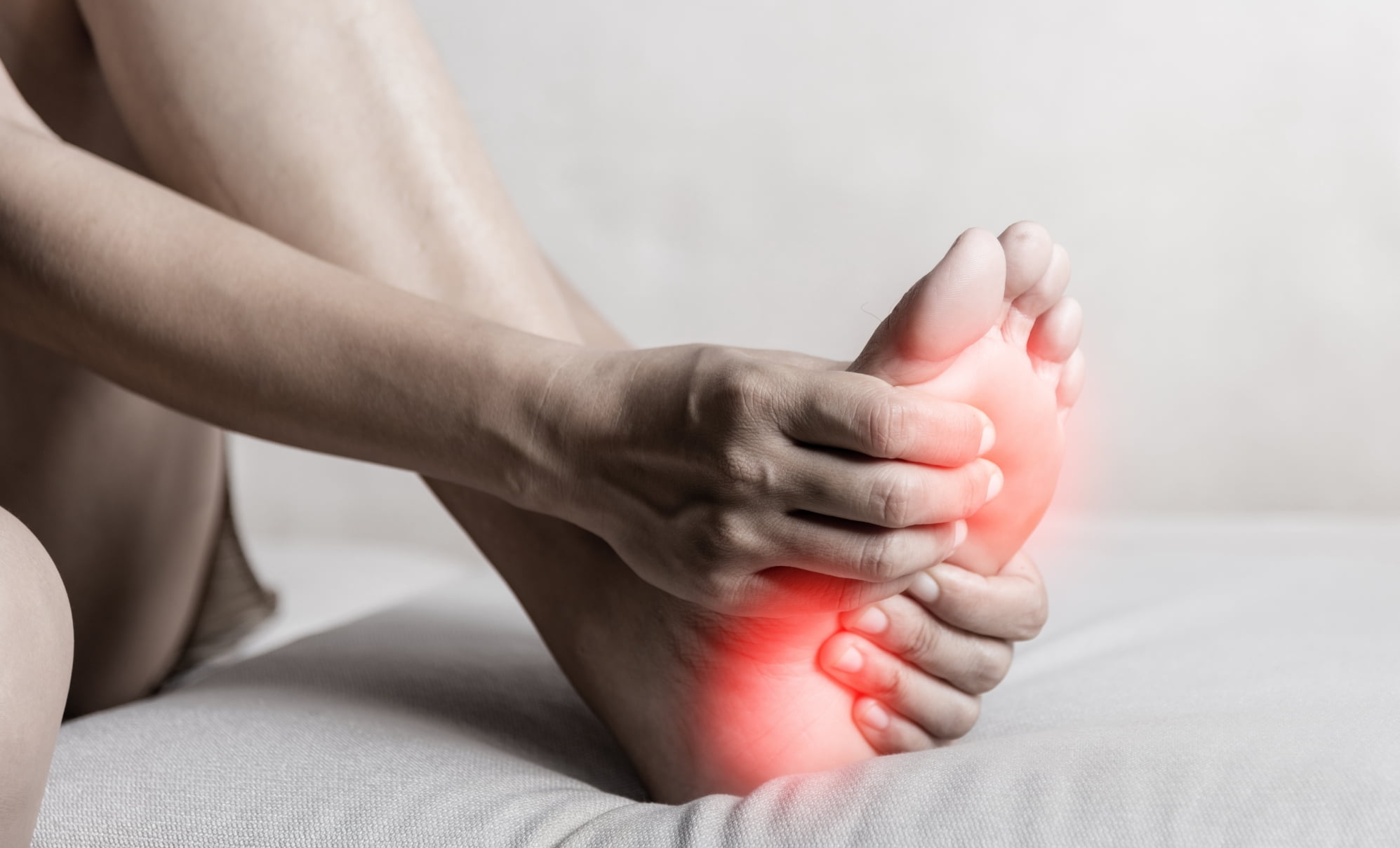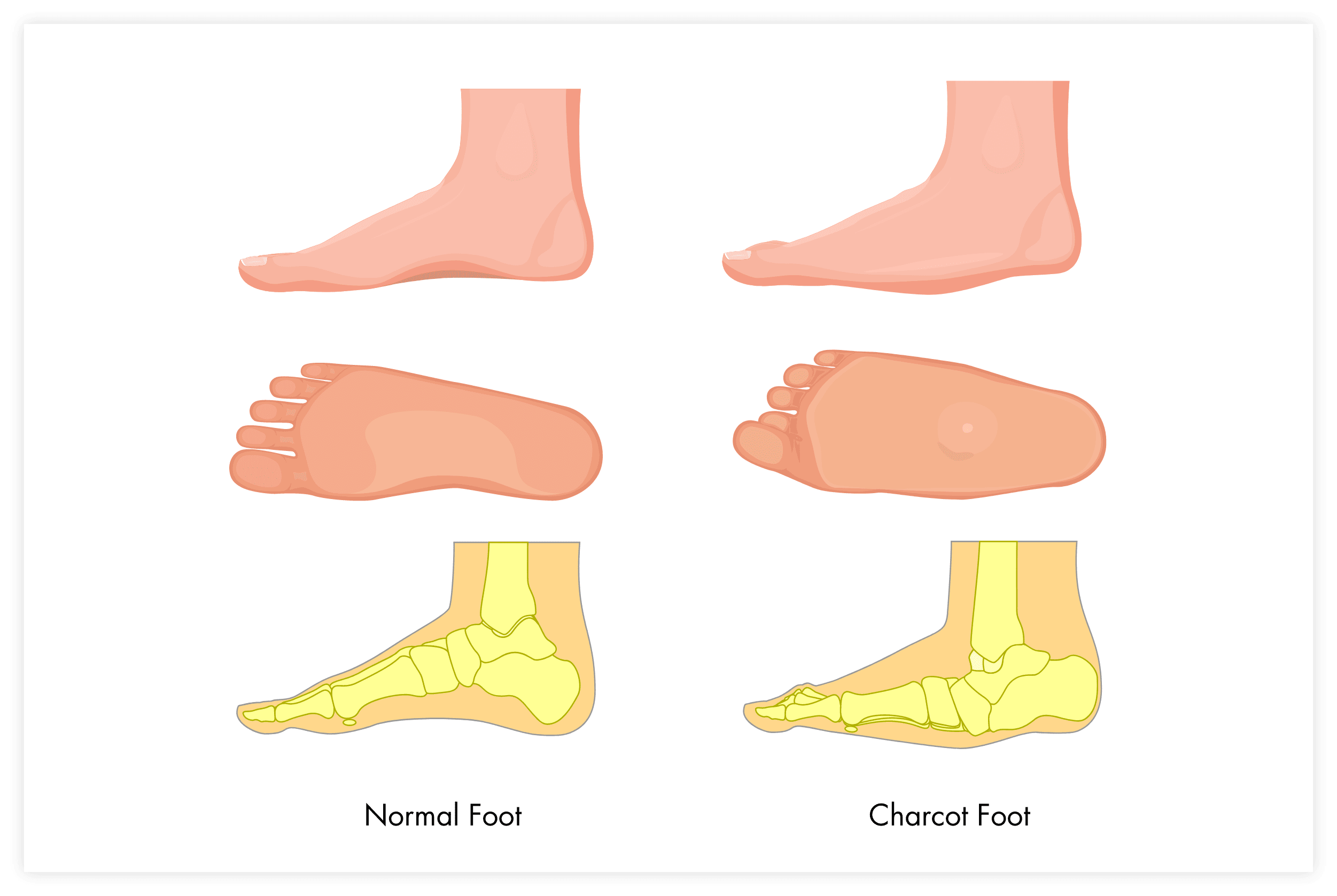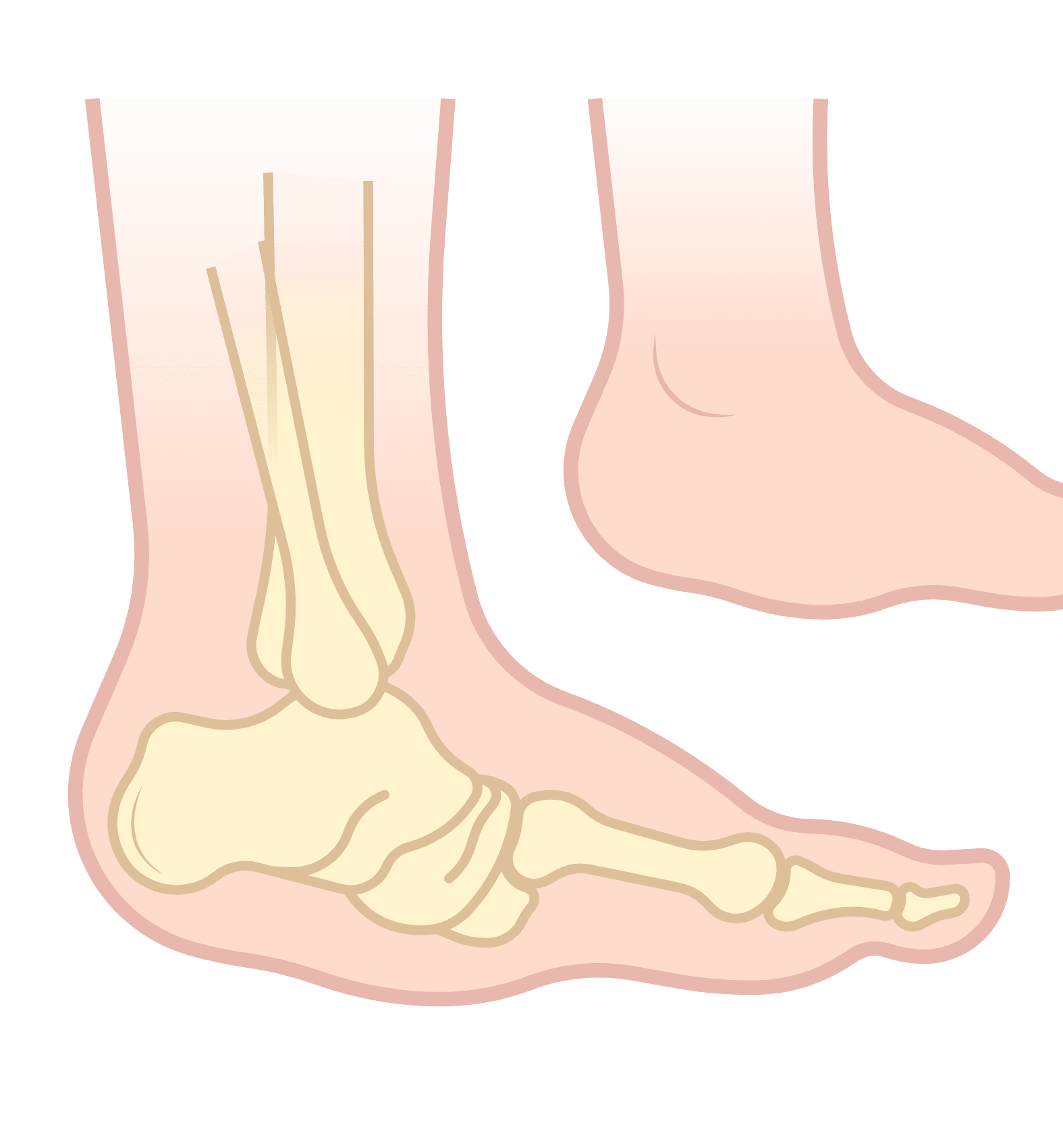There is still a lot to learn about what leads to Charcot in the foot and ankle, but it is thought to be caused by repetitive injury or trauma that builds-up over time. It's an unfortunate cycle. The continued stress placed on the foot through this repeated trauma ends up dulling the nerves in the foot, which in turn makes the condition worse because the pain goes unnoticed. The longer someone has neuropathy (significant nerve damage), the higher the risk they have for developing Charcot in the foot and ankle.3
Charcot in the foot and ankle is often the result of uncontrolled diabetes and is sometimes referred to as "diabetic foot"4:
First, poor blood supply to the nerves dulls sensation in the foot, making diabetics less likely to feel foot injuries.
Second, the lack of blood being supplied to the skin and the foot makes the healing process more difficult. Because of this, diabetic patients are more likely to get wounds and the wounds they do get are less likely to adequately heal. Unattended wounds allow bacteria to enter the foot, leading to diabetic foot infections.
If you are suffering from neuropathy, you may even sustain fractures or dislocations in the foot without even realizing it.
Understanding the origins of your Charcot foot is important to understanding your treatment next steps. Beyond diabetes, Charcot in the foot and ankle can develop through sprains or broken bones if the injury goes untreated due to a lack of sensation caused by nerve damage. Obvious traumatic events such as falls and injuries sustained in accidents can be contributing factors.5 Other causes include alcoholism or drug abuse, infection, spinal cord injury, various neurological diseases and conditions, steroid intake, and heavy-metal poisoning.6



